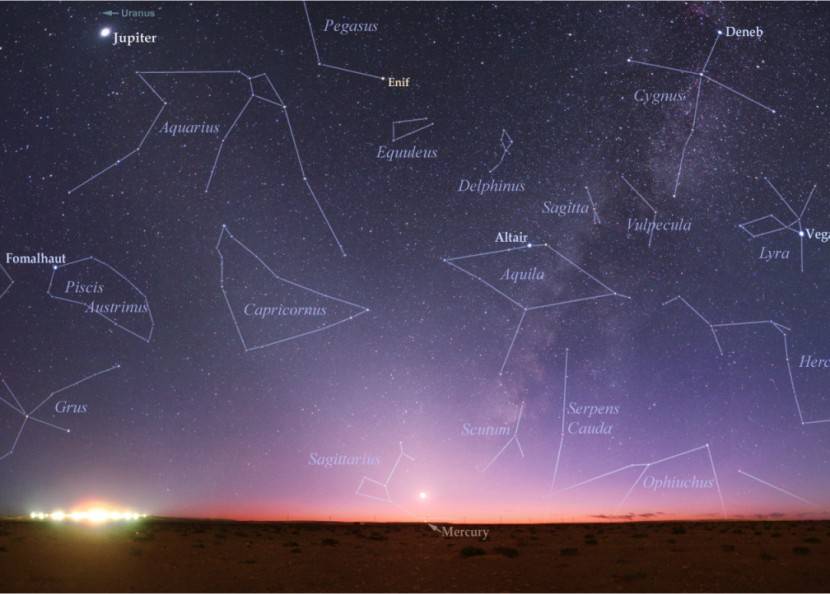The Sky-Shows of the Calendar Year

Sky-Shows of the Calendar Year: Astronomy is one of the most beautiful branches of science that has fascinated mankind for decades. We have always been mesmerized by the breathtaking beauty of galaxies, nebula and solstices. The magical auras of the space are also often believed to be the residence of Gods and fairies. As ‘seeing is believing’, Sky-Shows of the Calendar Year experiencing the northern lights with naked eyes is considered to be one of the hundred best things one should do in a lifetime. The beauty of the astronomical phenomena is unparalleled. 2018 is going to witness ten fascinating astronomical features within the span of twelve months, starting from the ‘Super Moon’ in January to ‘Geminids’ in December.
The world witnessed the ‘Super Moon’ on January 31st, 2018. The moon turned its color into dark coppery red, a phenomena occurring after about 150 years. When the moon is overshadowed by the earth, the ‘blood moon’ occurs due to the sun’s reddish hues falling on the surface of the moon. The first full month on the year appeared on New Year’s eve, followed by the Super Moon on January 31st, at the time of the lunar eclipse. February 15 was marked for the occurrence of partial solar eclipse, as a result of the moon passing between the sun and the earth. During the February solar eclipse, the moon had partially darkened the sun.
The beautiful blue moon is going to cast its splendor on Earth in the first Week of March. Sky-Shows of the Calendar Year This is going to be another feast of eyes for the sky watchers. The magical moon rises typically after 29.5 days. Since February has only 29 days, the blue moon will come in the purview of eyes only within the first one or two days of March. A red moon is also expected to appear around mid November this year.
The year is also to boast about a good number of shooting stars. Shooting stars are caused by the vaporization of meteoroids. Dust particles from comets reach the atmosphere at extremely high speeds and burn up due to frictional heating, resulting in what we call a shooting star or falling star. One such shooting star is the Lyrid meteor shower. The Lyrids, known to be the oldest meteor showers, are going to hit the skies of the Northern Hemispheres around late April. The Perseids too, will appear in the Northern Hemispheres during the month of August. The Perseids are one the most brightest of shooting stars. They appear in multitudinous numbers when the sky turns darkest. Halley’s tears, Sky-Shows of the Calendar Year caused by the remains of the famous comet Halley, will be able to be seen between 6th and 7th of May. The Orinoids, also formed by the particles of Halley’s Comet, will come to visibility in the first week of October. The Orinoids will be followed by Leonoids, which are going to hit the sky around November 17 or 18. The final meteor showerof the year, the Geminid meteor shower, will make its appearance between first and mid December. The Geminids are the most vibrant and most spectacular of all meteor showers and can be observed from almost all locations around the world.
Thus, 2018 is going to be a wonderful one for the astrophiles. Special significances are attached to many of these astronomical phenomena by different communities around the world. For example, shooting stars are believed to be fulfilling wishes, whereas full moons are believed to cause disasters. These are probably mere superstitions coming down through decades. However, some of the beliefs have scientific explanations as well Sky-Shows of the Calendar Year . For instance, it is advised that one should keep empty stomach during Lunar Eclipse. There is a belief that cooked food turns into poison during lunar eclipse. By in actuality, the pollution level in the environment rises and therefore the food quality is hampered. However, whatever be the superstition or belief , the astronomical events in the sky are magnificently marvelous. These are the most ravishing gifts of nature. Thus the year awaits many a stunning sky event, to captivate the eyes that are bored by the diurnal mundane landscapes, and to fascinate the souls with an overpowering bliss that probably only nature can bring.














